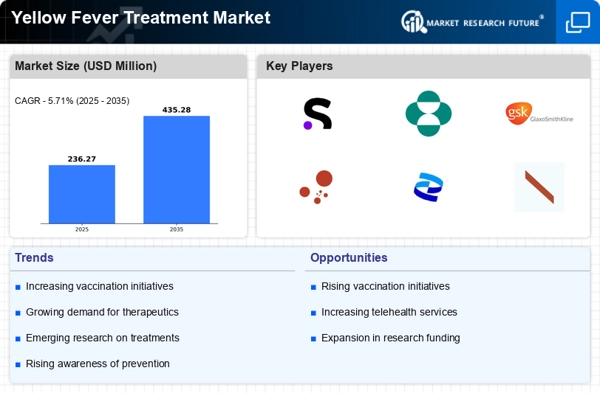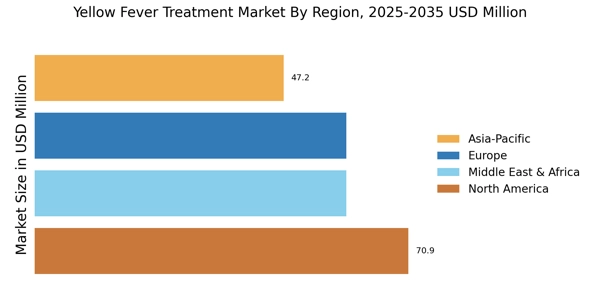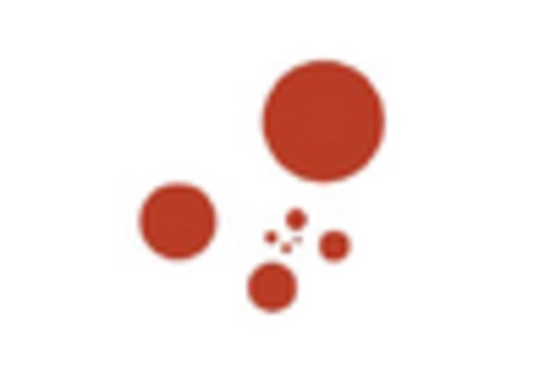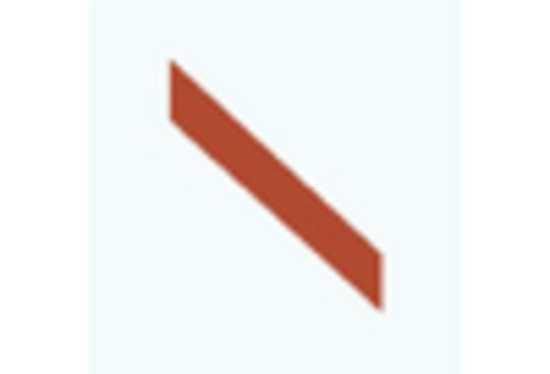Emerging Markets and Urbanization
Emerging markets and rapid urbanization are expected to drive the Yellow Fever Treatment Market in the coming years. As urban populations grow, the risk of yellow fever transmission may increase, particularly in areas where mosquito populations thrive. Countries experiencing significant urban growth may face challenges in managing public health, leading to a greater need for effective treatment solutions. Additionally, as economies develop, there is likely to be an increase in healthcare spending, which could further support the growth of the Yellow Fever Treatment Market. This trend suggests a potential for expansion in regions previously underserved in terms of healthcare resources.
Increased Awareness and Education
Increased awareness and education regarding yellow fever are likely to contribute positively to the Yellow Fever Treatment Market. Public health campaigns aimed at educating communities about the risks and prevention of yellow fever have gained momentum. As individuals become more informed about the disease, they may be more inclined to seek vaccination and treatment options. This heightened awareness can lead to increased demand for effective treatments, thereby stimulating market growth. Furthermore, educational initiatives targeting healthcare professionals can enhance the quality of care provided to patients, ultimately benefiting the Yellow Fever Treatment Market.
Advancements in Vaccine Technology
Advancements in vaccine technology are poised to significantly impact the Yellow Fever Treatment Market. The development of new vaccine formulations and delivery methods may enhance the efficacy and accessibility of yellow fever vaccines. Recent innovations, such as the use of mRNA technology, have shown promise in other infectious diseases and could potentially be adapted for yellow fever. As vaccine technology evolves, it is likely to lead to improved treatment options and increased vaccination rates, which in turn could reduce the incidence of yellow fever. This dynamic is expected to drive growth within the Yellow Fever Treatment Market as healthcare providers seek to implement the latest advancements.
Government Initiatives and Funding
Government initiatives aimed at combating yellow fever are likely to play a crucial role in shaping the Yellow Fever Treatment Market. Various governments have begun to allocate substantial funding for research and development of vaccines and treatments. For instance, initiatives to enhance surveillance and response strategies to yellow fever outbreaks have been implemented in several countries. This funding not only supports the development of new treatment options but also facilitates public health campaigns to educate communities about prevention and treatment. As governments prioritize infectious disease control, the Yellow Fever Treatment Market is expected to benefit from increased investment and resources.
Rising Incidence of Yellow Fever Cases
The increasing incidence of yellow fever cases in various regions appears to be a primary driver for the Yellow Fever Treatment Market. Reports indicate that the number of yellow fever cases has surged in certain areas, particularly in Africa and South America, where outbreaks have been reported. This rise in cases necessitates the development and distribution of effective treatments, thereby propelling market growth. The World Health Organization has noted that the disease poses a significant public health threat, which further emphasizes the need for robust treatment options. As awareness of the disease grows, healthcare providers are likely to invest more in treatment solutions, thus expanding the Yellow Fever Treatment Market.


















Leave a Comment